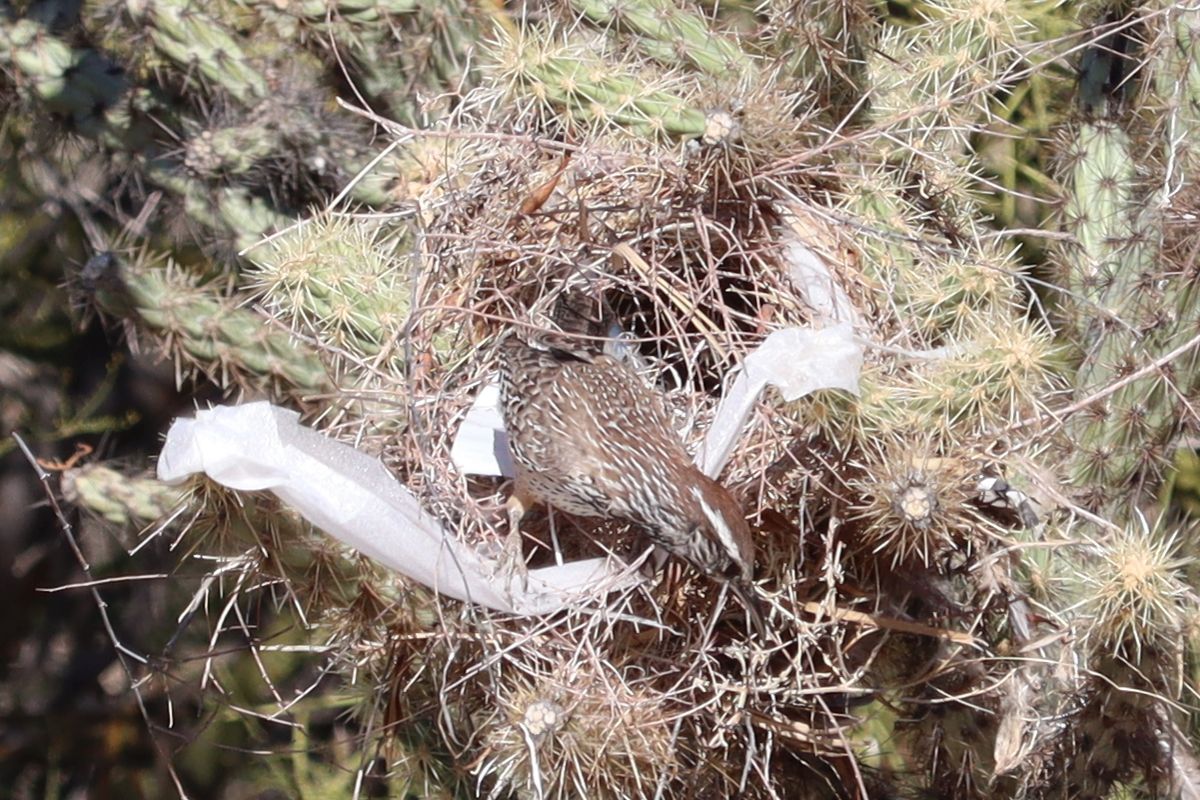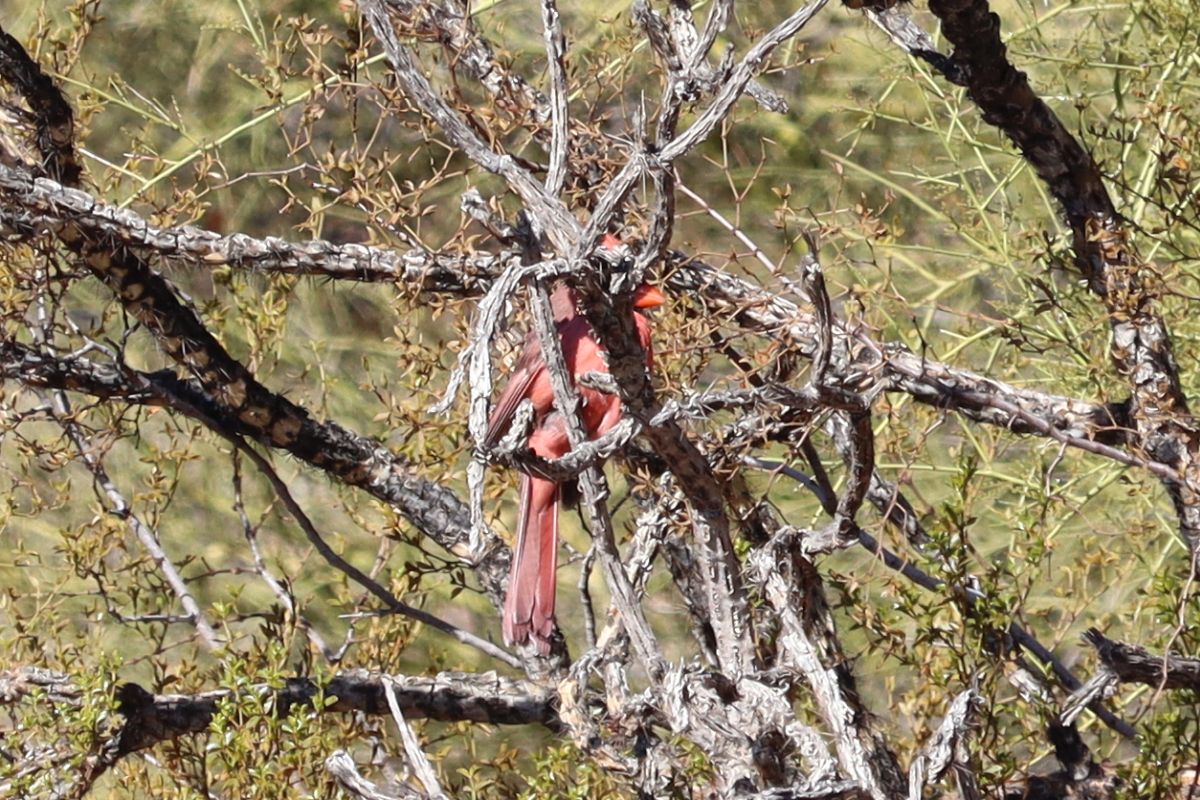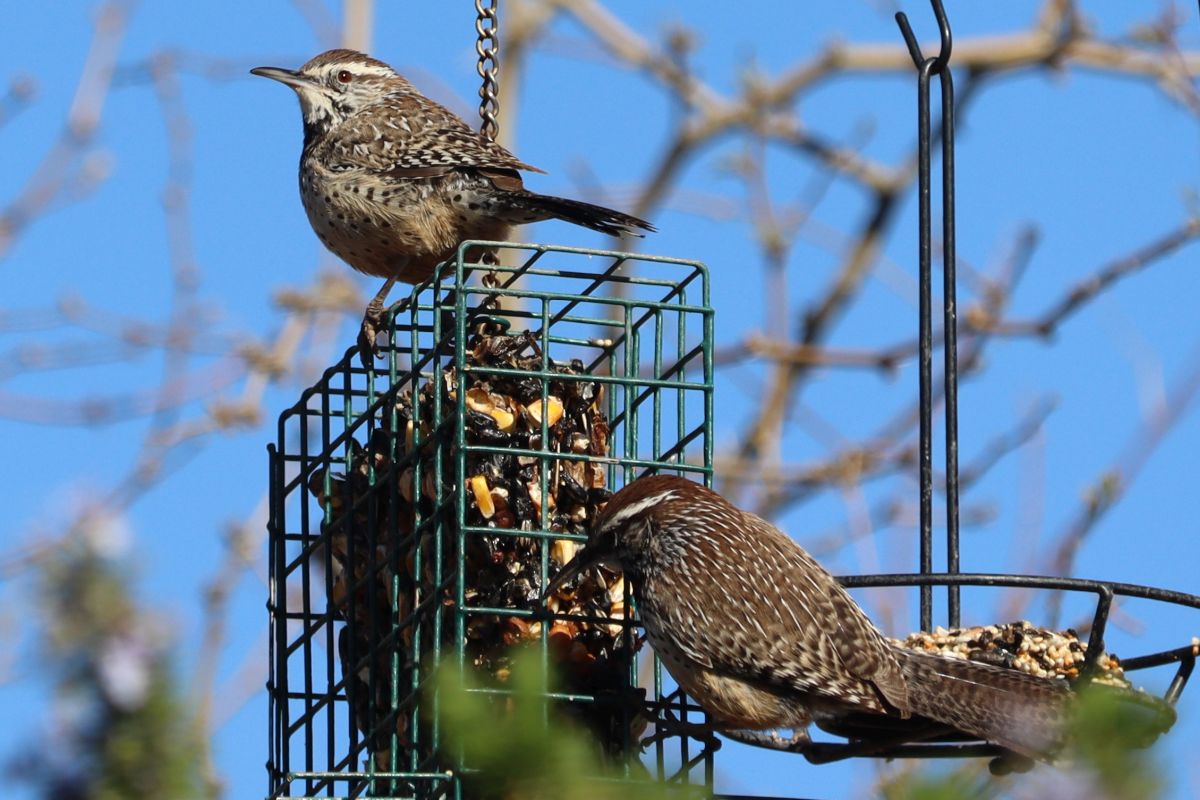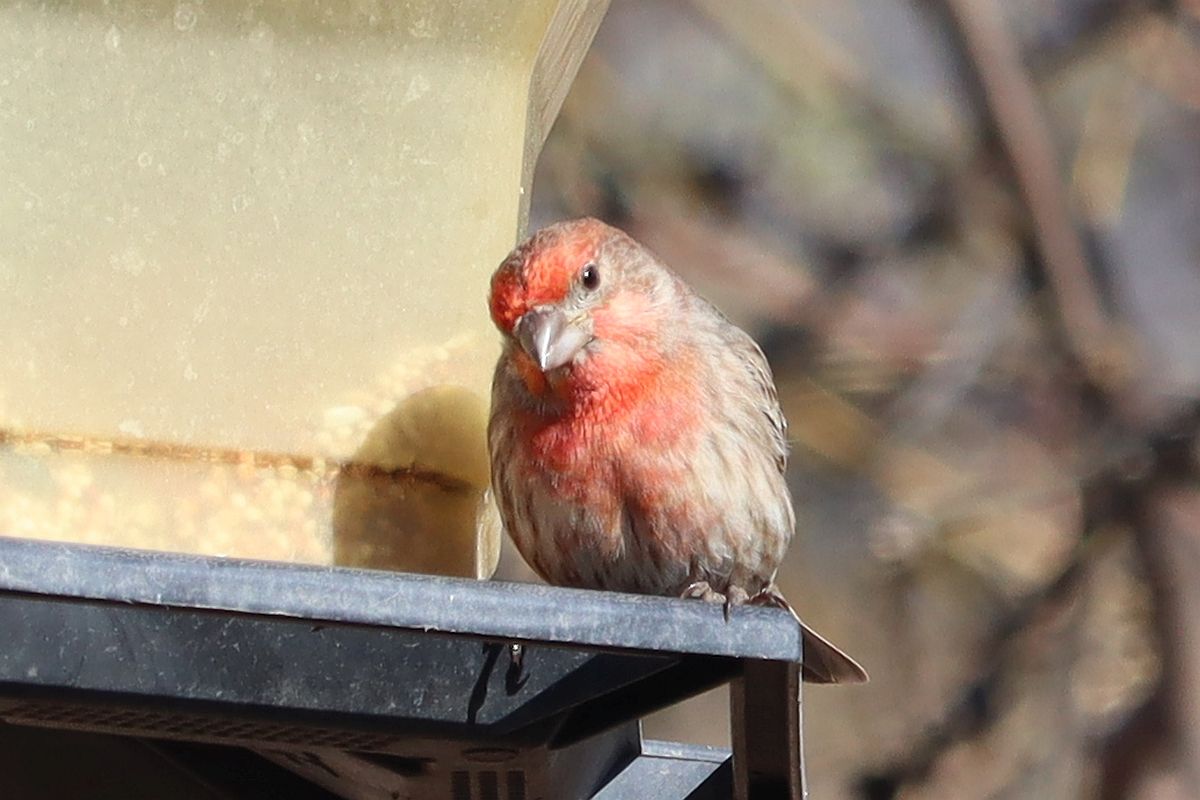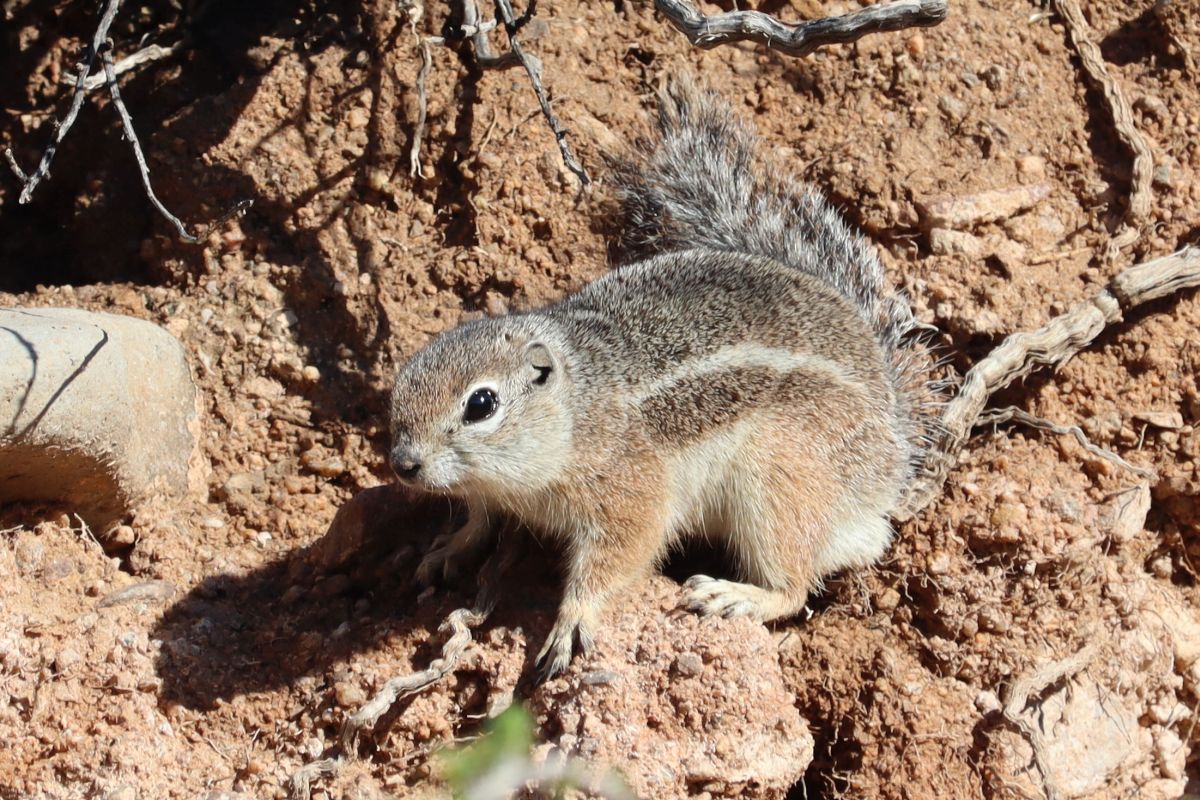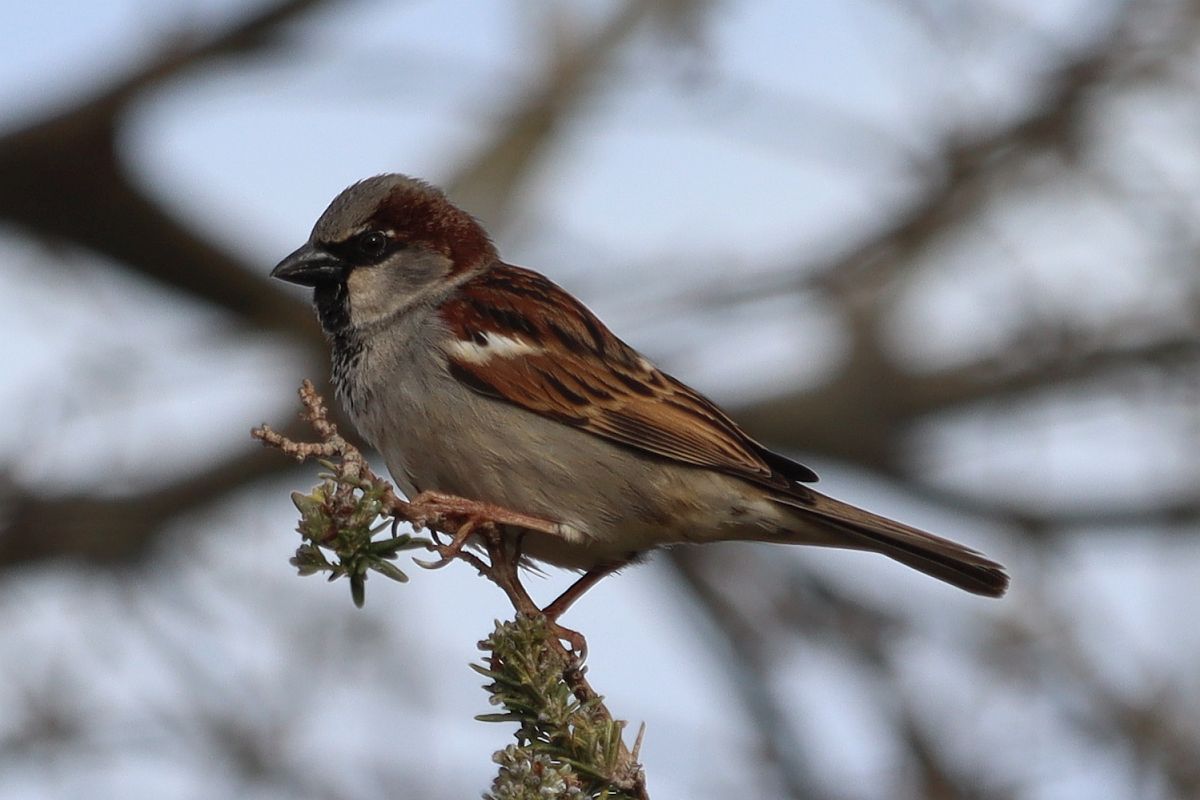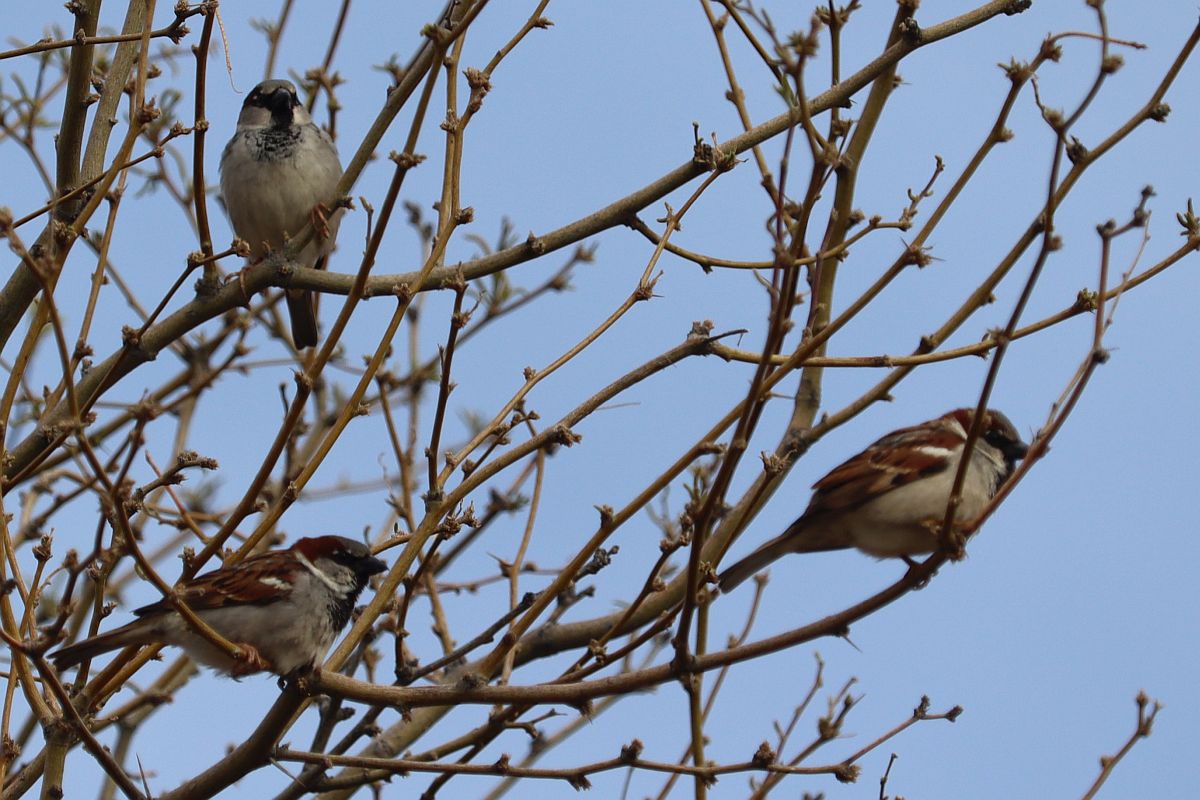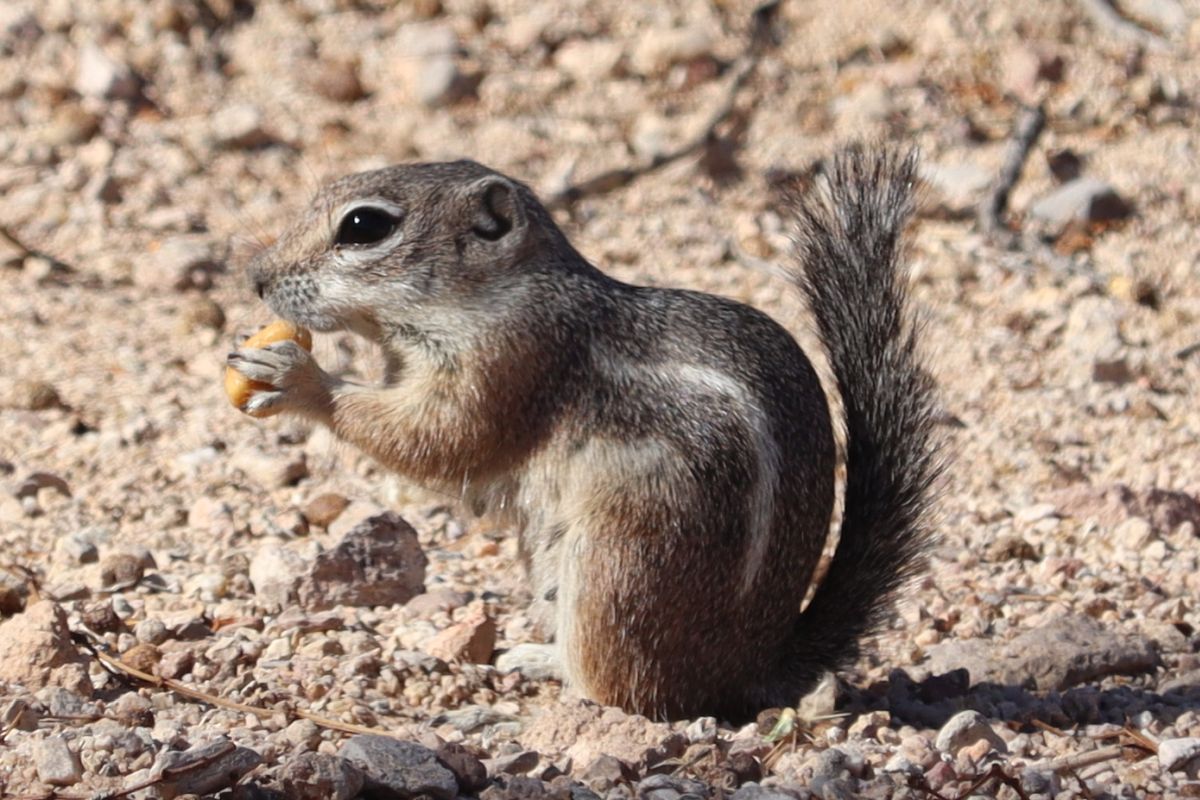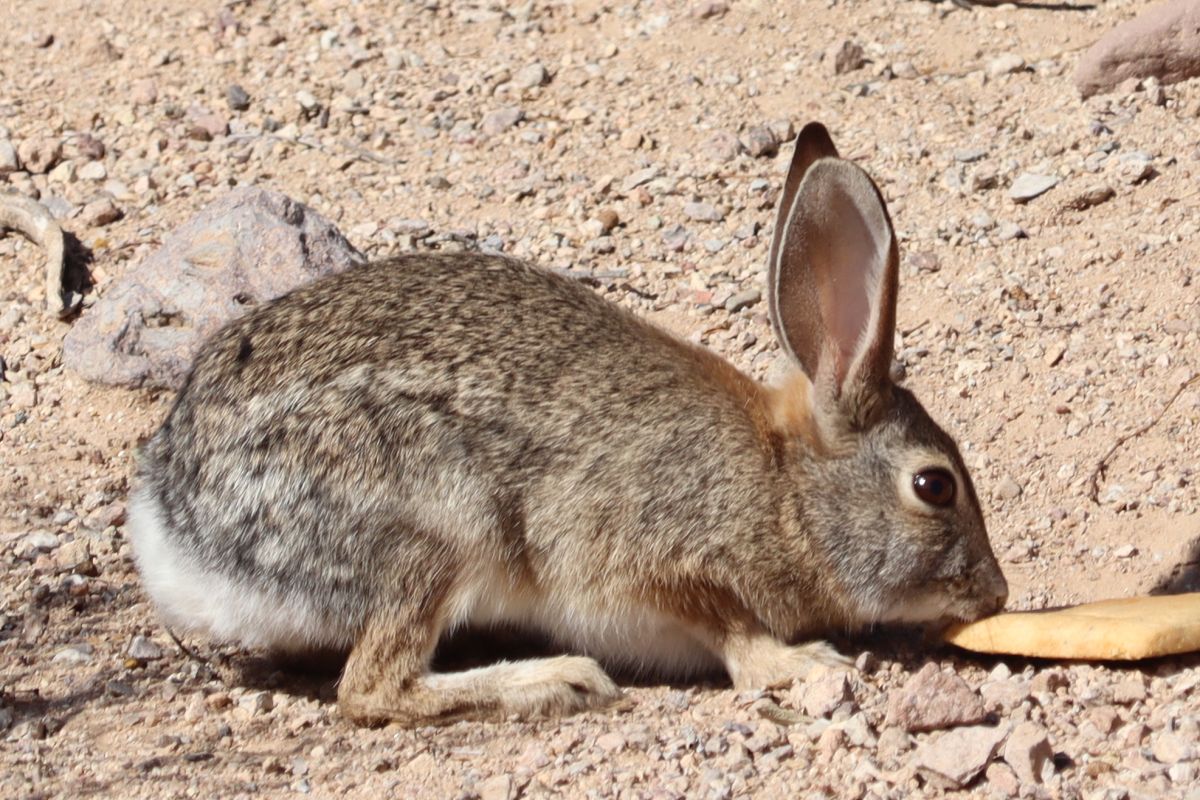I have been observing a cactus wren nest in a cholla cactus by the west fence for a few days. I frequently see one of the wrens attending to the nest as though there may be hatchlings in it.
Today, I was lucky enough to see one of the wrens coming out of the nest. I had my Canon EOS Rebel SL3 with me on my morning walk and got the photo above. Canon Normal Program Mode with EF55-250 lens set at a focal length of 250mm.
Click on the image to enlarge.

